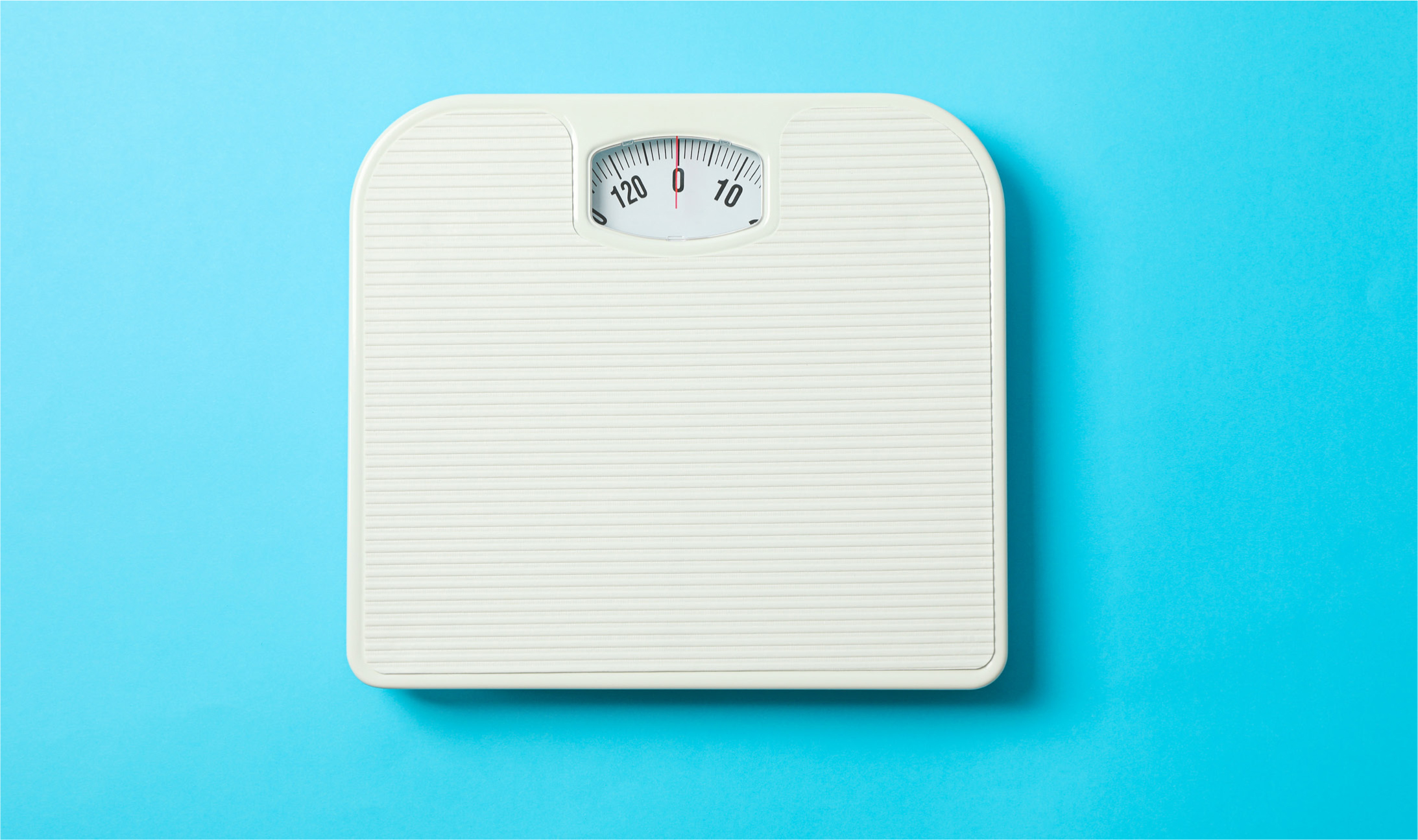
In January 2020, the World Health Organization (WHO) declared the severe acute respiratory syndrome coronavirus 2 (SARS-CoV-2), the virus that caused the novel coronavirus disease 2019 (COVID-19) pandemic a global health emergency (Velavan, 2020). Then, in March 2020, the UK Government introduced formal social lockdown measures to restrict the spread of the COVID-19 virus. The lockdowns and the pandemic have had considerable social and health consequences beyond the direct death toll attributable to COVID-19.
The COVID-19 pandemic has caused a considerable public health burden and, although the impact that the crisis has had on weight-related behaviours, including healthy eating and physical activity, has not been fully established, study results show that it may be substantial (Pearl, 2020).
Obesity has been defined as abnormal or excessive fat accumulation that may impair health (WHO, 2021). The fundamental cause of obesity and being overweight is an energy imbalance between the calories consumed and calories expended. Globally, there has been an increased intake of energy-dense foods that are high in fat and carbohydrates and a decrease in physical activity due to the increasingly sedentary nature of many forms of work, changing modes of transportation and increasing urbanisation (WHO, 2019b). The aim of this article is to examine the factors that have been described as COVID-19 predictors of weight gain. There are many ways in which weight may be controlled or managed, from exercise, diet and nutrition, to surgery to medication. Here, the medication liraglutide will be discussed, including its mechanism of action, side effects and contraindications.
Obesity and COVID-19
The extended quarantine period, widespread shutdown duration and adverse psychological reactions to the pandemic are believed to have had an unintended consequence of weight gain.
Studies have shown that the COVID-19 virus more adversely impacts people with obesity than those within a normal weight range. Studies have also shown that having a BMI of 30 or more—the threshold that defines obesity—increases the risk of being admitted to hospital by 113%, being admitted to intensive care by 74% and dying by 48%. Public Health England has similar figures, with the risk of death of those with a BMI exceeding 40 to increase by 90% (Public Health England, 2020). Studies from the World Obesity Federation have also shown that people under the age of 60 years are twice as likely to be admitted to intensive care with COVID-19 if their BMI is between 30–35, compared to a normal BMI, which demonstrates that being overweight is linked to worse outcomes in younger populations and is irrespective of age (World Obesity Federation, 2022). In the UK, which has the highest obesity rates in Europe, the death rate is disproportionately high when compared to other countries. In the US, where obesity rates are also notably high, the rates of COVID-19 cases and deaths have been the highest recorded across the globe.

These concerning statistics have placed an emphasis on the world's obesity epidemic and should be treated as a wake-up call to tackle the burden of obesity.
Excess weight is one of the few modifiable factors for COVID-19 and, as such, achieving a healthier weight is crucial to keep the nation fit and well as we move forward. In July 2020, the Department of Health and Social Care for England announced a new obesity strategy that emphasised the increased risks associated with COVID-19 (Department of Health and Social Care, 2020a). The strategy outlines seven measures to target obesity, including the expansion of weight management services available through the NHS, legislation requiring food businesses to add calorie labelling to their foods and a ban on advertising of foods high in fat, salt or sugar on television before 9pm. In the months following this release, additional restrictions were added, including restricting the promotion of unhealthy foods at checkouts, entrances and ends of aisles in supermarkets and other food stores, stating that ‘location promotions often lead to ‘pester power’ from children (Department of Health and Social Care, 2020b).
Before the pandemic, approximately 2.8 million people worldwide died each year from conditions arising as a result of being obese, such as heart disease, stroke and diabetes. The scenario to be avoided is COVID-19 weight gain being the catalyst for two public health pandemics colliding. The aim of this article is to explore the risk factors of weight gain during the pandemic and to look at how liraglutide works to manage obesity.
Obesity overview
The most common and convenient measurement of obesity used currently is body mass index (BMI). BMI is calculated by dividing a person's weight in kilograms by their height in metres squared. The result produced then falls into a number of classifications.
A result below 18.5 is classed as underweight, between 18.5 and 25 is considered a healthy range and between 25 and 30 is classed as overweight. Once BMI goes over 30, the patient is classed as obese, with this range then being further divided into three obesity classes: obesity class I (≥30 and <35); obesity class II (≥35 and <40) and obesity class III (≥40). Obesity rates are increasing worldwide, and it is recognised as a disease and health issue by various global organisations and regulatory bodies. The WHO stated that ‘obesity is a chronic disease, prevalent in both developed and developing countries and affecting children as well as adults’ (WHO, 2019a). Additionally, the European Medicines Agency (EMA) reported that ‘obesity is recognised as a chronic clinical condition and is considered to be the result of interactions of genetic, metabolic, environmental and behavioural factors, and is associated with increases in both morbidity and mortality’ (EMA, 2019). The Organisation for Economic co-operation and Development (OECD) also stated that ‘overweight and obese people are a majority today in the OECD area. The obesity epidemic continues to spread, and no OECD country has seen a reversal trend since the epidemic began’ (OECD, 2019), while the European Association for the Study of Obesity (EASO) described obesity as ‘a progressive disease, impacting severely on individuals and society alike. It is widely acknowledged that obesity is the gateway to many other disease areas’ (EASO, 2015).
Obesity is associated with multiple comorbidities, not just mechanical systems within the body, but also metabolic and mental health (Jarolimova et al, 2013). Mechanical comorbidities include physical functioning, incontinence, chronic back pain and sleep apnoea, whereas metabolic comorbidities include asthma, gallstones, infertility and various cardiovascular diseases, as well as type 2 diabetes, thrombosis and some cancers. Mental comorbidities can include depression and anxiety (Jarolimova et al, 2013). While people are very aware of the death toll that is directly linked to COVID-19, the secondary effects, such as missed diagnosis of heart conditions, cancers and diabetes and the pause of treatment in multiple conditions, are still being revealed and will no doubt continue to be for quite some time to come.
COVID-19 self-quarantine and its impact on obesity risk factors
As previously mentioned, the COVID-19 virus more adversely impacts people with obesity than those with a normal weight (Kalligeros et al 2020). However, the extended COVID-19 quarantine, widespread shutdown and psychological reactions to the pandemic are believed to have had the unintended consequence of weight gain (Bhutani and Cooper, 2020).
Physical activity barriers
Sedentary behaviour
A French cross-sectional study showed that 63.2% of its 37252 participants reported increased sedentary time, with an average of 7 hours per day sitting during lockdown (Deschasaux-Tanguy et al, 2020). Similar results have been found in a number of studies around the world. Reports from Fitbit Inc showed an overall decrease in walking during the COVID-19 quarantine period. Data showing the average step counts of more than 30 million users showed a significant decline in step counts ranging from 7–38% across various nations during the week ending 22 March 2020 when compared to the same period in 2019 (Fitbit, 2021).
Studies have been used to determine the predictors of weight gain during COVID-19 self-quarantine, which have been shown to be both sedentary behaviours and increased time watching television. Research conducted prior to COVID-19 showed that unhealthy habits that frequently accompany long periods of watching television, such as increased snacking on calorie-dense foods, fast foods and sugary drinks may also contribute to weight gain.
Exercise
Studies looking into changes in exercise habits have provided some interesting results. While increased sedentary behaviours and decreased exercise are two independent risk factors predicting weight gain, the two may have been simultaneously provoked, resulting in negative outcomes.
An Italian study of 3533 participants revealed that those who were active during the lockdowns were more often likely to have been active prior to the pandemic and did not stop (Di Renzo, 2020). This data continued to back this theory by showing that those inactive prior to the pandemic did not then start exercising, suggesting that COVID-19 reinforced habits from prior to the pandemic.
Dietary changes
Controlling food intake and maintaining a healthy, controlled diet during the pandemic has been difficult for many. Studies have shown that not only has total food intake increased (Zachary, 2020), but the quality of the food consumed has also been negatively impacted (Kriaucioniene, 2020). Those who reported weight gain mentioned dietary changes, such as decreases in fruit and vegetables, increases in sugary drink consumption and increased processed food as contributors to weight gain. A UK study noted that 82% of participants had changed the food in their homes from fresh food to food that did spoil quickly (Robinson et al, 2021). Furthermore, an Italian study showed that, in the first 6 weeks of lockdown, sales of fresh fruits and foods decreased, while there was an increase in canned and frozen food consumption (Bracale, 2020).
Snacking
Although unable to show the exact calorific increase to diets, it is commonly reported that snacking has increased during the COVID-19 pandemic, with studies showing that 52% of participants admitted to snacking more frequently between meals during the pandemic, in comparison to before (Sidor, 2020). As pre-pandemic research has shown, increased snacking leads to an increased intake of calories that, if consistent, may lead to increased weight gain (Mattes, 2018).
Water
Research has shown that, in many cases, the intake of water has been reduced and often replaced with sugary drinks (Di Renzo, 2020). Data has previously shown that decreased water intake may have a negative impact on satiety response (Dennis, 2010) which is potentially a contributory factor for weight gain during the COVID-19 quarantine period.
Alcohol
The debate as to whether alcohol intake during COVID-19 has increased or decreased is controversial, with various studies providing conflicting results. Some studies have shown that alcohol consumption increased among those who drank alcohol regularly before the pandemic (Deschasaux-Tanguy, 2020). However, many studies showed a decrease in binge drinking and the consumption of alcohol (Ammar, 2020; Di Renzo, 2020). Despite contrasting results, increased alcohol consumption is a predictor of weight gain during the COVID-19 self-isolation period (Kriaucioniene, 2020).
Psychological impact on eating
During the COVID-19 pandemic, increased stress, anxiety and depression have all been reported (Rajkumar, 2020). There are many sources that may trigger psychological conditions, mainly self-isolation, and, interestingly, social media overload has also been named as a source of provocation for anxiety and stress. One study showed that 82% of its subjects were regularly exposed to social media, and that increase in exposure was linked to an increased chance of anxiety and depression (Gao et al, 2020). Pre-COVID data has shown that food choice can be influenced by psychological conditions such as anxiety and that negative emotions are a predictor of poor diet and the increased intake of saturated fat, energy-dense and salty food (Anton, 2005). Boredom may also contribute to more emotional eating and, therefore, lead to weight gain.
Demographic predictors of weight gain
Body mass index
The vast majority of research has shown that those categorised as overweight or obese before the start of the lockdown period were at a higher risk of weight gain. One theory for this is that those individuals already had pre-established habits of buying and consuming unhealthy, calorific and processed foods, which were then exacerbated by the pandemic.
Gender
Gender was not consistently shown to be a predictor of weight gain.
Age
The impact of age on weight gain is unclear. Some studies show age to have no impact (Kriaucioniene, 2020) on weight gain during the pandemic; however, others suggested that a lower age was associated with increased unhealthy food consumption and increased overall appetite (Di Renzo, 2020).
How obesity can be managed with liraglutide
Obesity can lead to many other health issues and, as such, there are many benefits to weight loss. A 5–10% weight loss can have a number of health advantages, including a reduction in the risk of type 2 diabetes (Knowler 2002; Asif, 2014); reduction in cardiovascular mortality (Li, 2019); improvements in blood pressure (Wing et al, 2011); and improvements in health-related quality of life (Warkentin et al, 2014). Studies suggest that if levels of obesity could be reduced by 1% every year from the predicted trend between 2015 and 2035, £300 million could be saved in direct health and social care costs in 2035 alone (Obesity Health Alliance, 2019).

One drug currently approved by the EMA for use in the UK is liraglutide, which is the focus of this article. Liraglutide is the active ingredient of Saxenda and belongs to a class of medications called human glucagon-like peptide-1(GLP-1) (Medicines.org.uk, 2019). Liraglutide is a GLP-1 receptor agonist and is indicated as an adjunct to a reduced calorie diet and increased physical activity for chronic (long-term) weight management. It may be prescribed for individuals with a BMI of 30kg/m2 or more, or people with a BMI of 27kg/m2 who have another weight-related illness, such as high blood pressure, type 2 diabetes or dyslipidaemia (Drugs.com, 2019).
Mechanism of action
The exact mechanism of liraglutide is unknown; however, it is a GLP-1 receptor agonist and aids in weight control in animal models by affecting sensations of hunger, causing a decrease In appetite and food intake. It slows down the passage of food from the stomach into the intestine, causing the user to feel full for longer after a meal. It also decreases the glucose level in the blood and the amount of insulin needed for the body to use the glucose (Medicines.org.uk 2019).
Dosage and administration
The recommended dose of Saxenda is 3mg daily (Joint National formulary, 2018). It should be injected subcutaneously into the abdomen, thigh or upper arm at any time of day, without regard to the timing of meals. It is recommended that the dosage is initiated at 0.6mg per day for 1 week and increased gradually at weekly intervals until a full dosage of 3mg is reached (Medicines.org.uk, 2019). The pre-filled pen allows delivery of doses at 0.6mg, 1.2mg, 1.8mg, 2.4mg or 3mg and dose escalation is to minimise the likelihood of gastrointestinal symptoms.
A different injection site should be used for each dose and injection should be avoided into areas of skin that are sore, red, infected or otherwise damaged (Medicines.org.uk 2019).
Once someone is initiated on Saxenda, the change in body weight should be evaluated after 16 weeks. At this point, if at least 4% of baseline body weight has not been lost, Saxenda should be discontinued, as it is unlikely that continued treatment will result in clinically meaningful and sustainable weight loss (Medicines.org.uk, 2019).
» Once someone is initiated on Saxenda, the change in body weight should be evaluated after 16 weeks. At this point, if at least 4% of baseline body weight has not been lost, Saxenda should be discontinued, as it is unlikely that continued treatment will result in clinically meaningful and sustainable weight loss «
Saxenda should be clear and colourless and should not be used if particles are noticed or if its appearance is unusual in any way (Medicines.org. uk, 2019). The pre-filled pen should be stored in a refrigerator before its first use and should not be allowed to freeze. After its first use, the pen may be stored at room temperature or in the refrigerator for up to 30 days (Medicines.org.uk, 2019).
Side effects
The most common side effects experienced with Saxenda are gastrointestinal (Medicines.org.uk, 2019), with very common sides effects including nausea, vomiting, diarrhoea and constipation. Common side effects include hypoglycaemia, insomnia, dizziness, dysgeusia, dry mouth, dyspepsia, gastritis, gastro-oesophageal reflux disease, flatulence, abdominal distension, fatigue, increased lipase, increased amylase and cholelithiasis (Joint National Formulary, 2018). There may also be reactions at the site of injection.
Studies have shown that the majority of gastrointestinal side effects experienced were mild to moderate and not severe enough to lead to discontinuation of treatment. Side effects occurred within the first weeks of treatment and reduced with a few days or weeks of treatment. The aim of the 4-week dose-escalation scale is to minimise gastrointestinal side effects experienced (Pi-Sunyer et al, 2015).
Warnings and precautions
Thyroid tumours
Liraglutide causes dose-dependent and treatment-duration-dependent thyroid C-cell tumours at clinically relevant exposures in both genders of rats and mice. It is currently unknown whether Saxenda will cause thyroid C-cell tumours, including medullary thyroid carcinoma (MTC), in humans, as the human relevance of liraglutide-induced rodent thyroid C-cell tumours has not been identified. Therefore, liraglutide is contraindicated in patients with a personal or family history of MTC or multiple endocrine neoplasia (MEN 2). Patients using this medication should be made aware of symptoms of thyroid tumours, such as a mass in the neck, dysphagia, dyspnea or persistent hoarseness (Medicines.org.uk, 2019).
Acute pancreatitis
Liraglutide can cause inflammation of the pancreas. If users experience any symptoms, such as severe and persistent abdominal pain, sometimes radiating to the back and which may or may not be accompanied by vomiting, they should seek emergency help immediately and discontinue use (Medicines.org. uk, 2019).
Acute gallbladder disease
Gallstone formation (cholelithiasis) often arise when there has been significant or fast weight loss and has been associated with the use of liraglutide. The user should contact their doctor immediately if any of the following symptoms are experienced:
- Nausea
- Vomiting
- Pain under the right shoulder or between the shoulder blades
- Severe abdominal pain (usually in the middle or upper right section of the abdomen)
- Pain after eating, particularly food with high-fat content (Medicines.org.uk, 2019).
Risk for hypoglycaemia with concomitant use of anti-diabetic therapy
The risk of hypoglycaemia is increased when Saxenda is taken with sulfonylureas such as gliclazide or glyburide in patients with type 2 diabetes. In these patients, glucose levels should be monitored before and during treatment and, if needed, co-adjustment of anti-diabetic drugs can be made based on glucose monitoring. Saxenda should not be used in patients taking insulin (Medicines.org.uk, 2019).

Heart rate increase
Liraglutide may cause increased heart rate and may affect how electrical impulses travel through the heart muscle. Heart rate should be monitored at regular intervals consistent with usual clinical practice and patients should inform prescribers of palpitations or feelings of a racing heartbeat. If a sustained increase in resting heart rate is experienced, then treatment should be discontinued (Medicines.org.uk, 2019).
» Liraglutide may cause increased heart rate and may affect how electrical impulses travel through the heart muscle. Heart rate should be monitored at regular intervals consistent with usual clinical practice and patients should inform prescribers of palpitations or feelings of a racing heartbeat «
Renal impairment
Caution should be used when initiating or escalating doses of Saxenda in patients with renal impairment, as studies have shown reports of acute renal failure and worsening of chronic renal failure. The majority of reported events occurred in patients who had experienced nausea, vomiting or diarrhoea leading to volume depletion (Medicines.org.uk, 2019).
Conclusion
It is clear to see that obesity management is not only important for the patient themself, both physically and mentally, but also important for the NHS and society as a whole.
Studies have shown that weight gain has increased as a result of the COVID-19 self-isolation and, as such, there has not been a better opportunity or greater need than now to increase our efforts to improve the nation's health, ensure good nutrition and strive to control the rise in obesity.
As with any medication that is prescribed, patients should be aware of all side effects and contraindications before beginning treatment and have realistic expectations when it comes to weight loss goals. This will help maintain motivation. Patients should be made aware that medications only work when used in conjunction with a decreased calorie diet and should be encouraged to increase physical activity accordingly to achieve optimum results.
Hopefully, encouraging weight loss and helping people to try to maintain a healthy weight will not only minimise the risk of an obesity crisis, but also rises in other conditions, such as diabetes and stroke.
Key points
- The COVID-9 pandemic and UK lockdowns are likely to have had considerable health and social consequences beyond the direct death toll attributable to COVID-19. One of the unintended consequences is that of obesity, and there are a number of COVID-19 predictors of weight gain
- Studies have shown that the COVID-19 virus more adversely impacts people with obesity than those within a ‘normal’ weight range
- Excess weight is one of the few modifiable factors for COVID-19 and, as such, achieving a healthier weight is crucial to keep the nation fit and well as we move forward
- Liraglutide is the drug commonly known as Saxenda®. It may be prescribed for individuals with a body mass index (BMI) of 30 kg/m2 or more, or people with a BMI of 27 kg/m2 who have another weight-related illness, such as high blood pressure, type 2 diabetes or dyslipidemia
- Liraglutide has a number of cautions and contraindications and the side effects experienced are generally gastrointestinal-related. As with many weight management programmes, Saxenda works in conjunction with a reduced calorie diet and an increase in physical activity.
CPD reflective questions
- What are COVID-19 predictors for weight gain and why?
- What criteria would a patient need to meet (and what conditions would they need to exclude) to be eligible for treatment with liraglutide?
- What are the secondary risks of obesity?
- How has COIVD-19 affected weight gain since March 2020?



